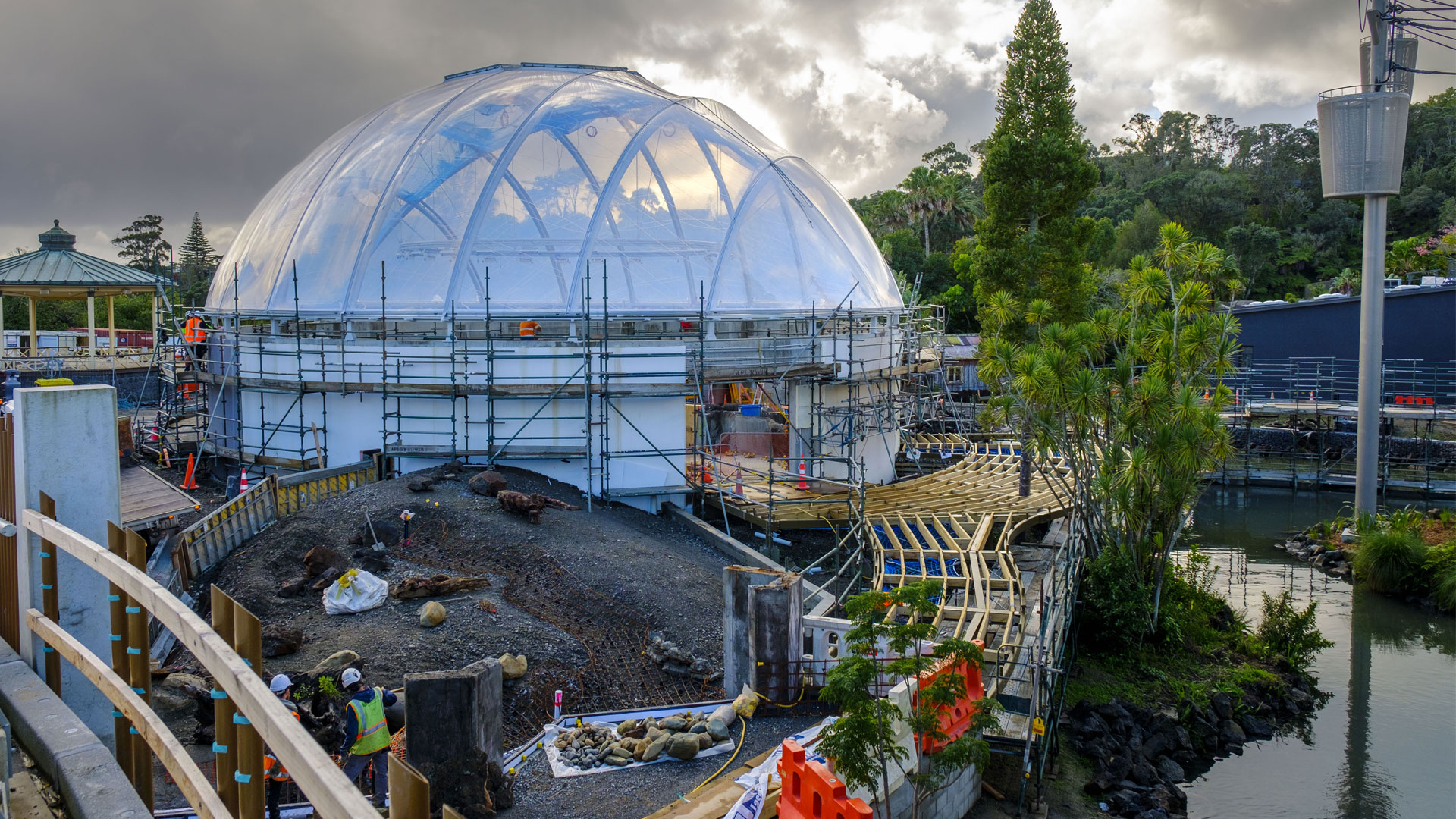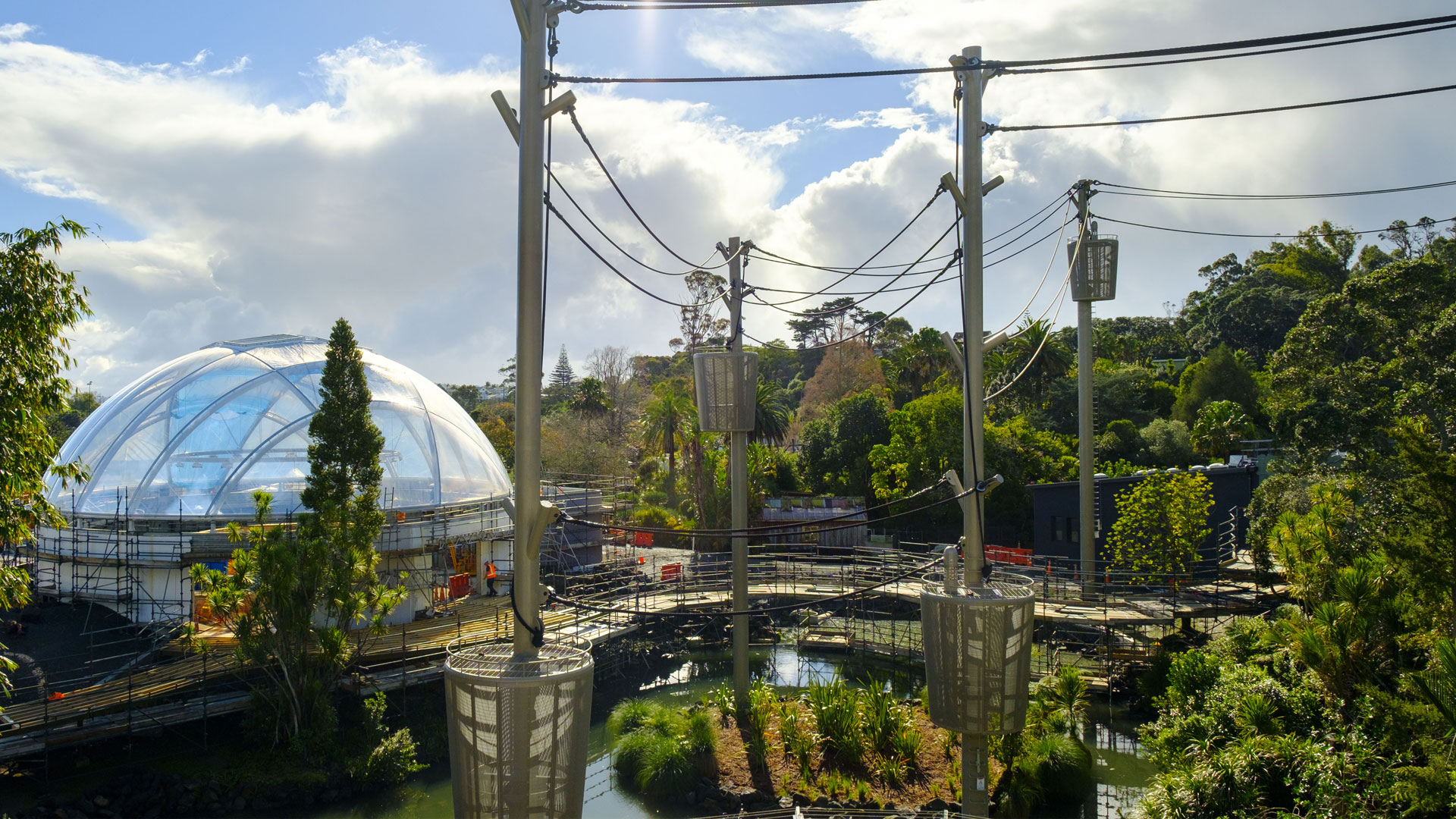We’re excited to share that the roof of the tropical dome - our new Indonesian swamp forest habitat for South East Asian crocodiles, fish, turtles and tortoises, to open next year - is now on!
This transparent EFTE (ethylene tetrafluoroethylene) covering over the dome’s curved steel ribs creates a stunning light-filled space and acts as a smart insulating blanket. Its 22 double-layered ‘cushions’ (each 0.5-1m deep) provide cosy double-glazing which along with computer-controlled heating, roof vents and destratification fans, will ensure this tropical habitat is a hot, humid 28-degrees Celsius year-round.







